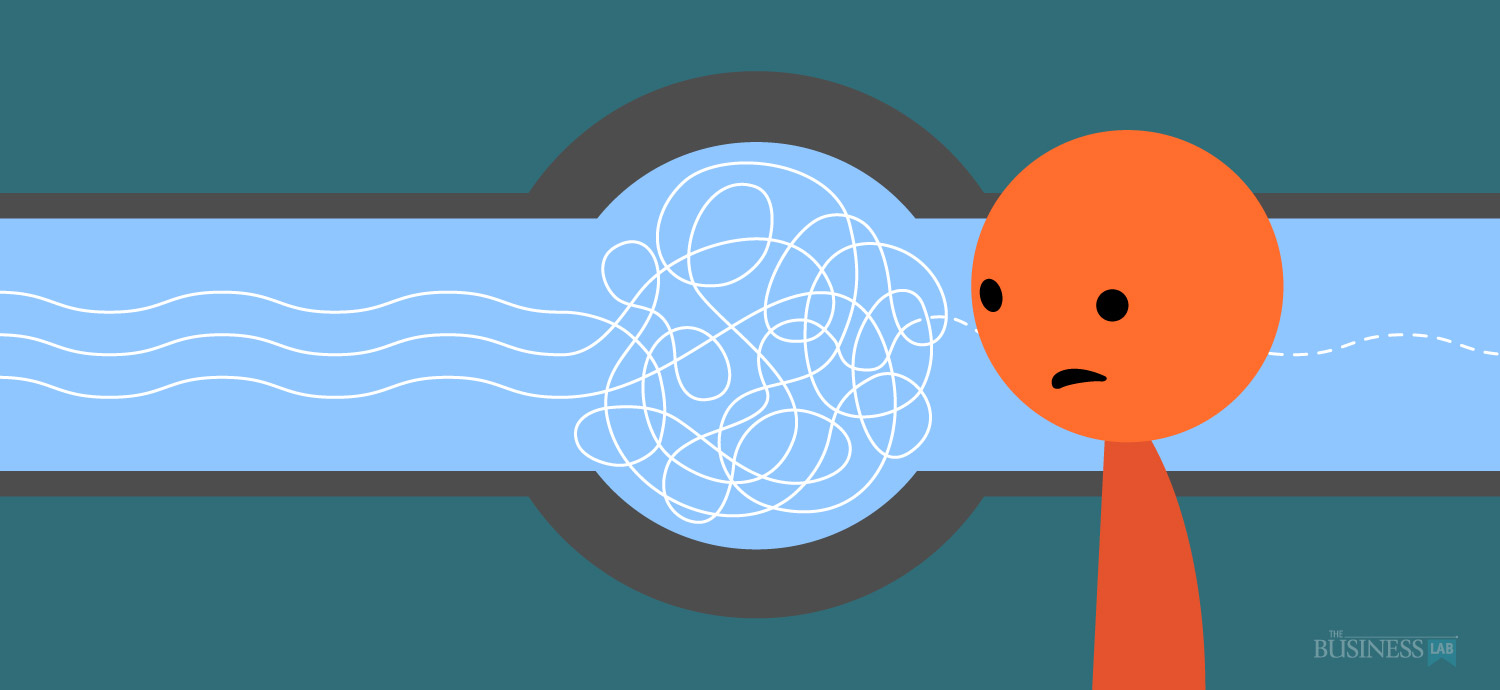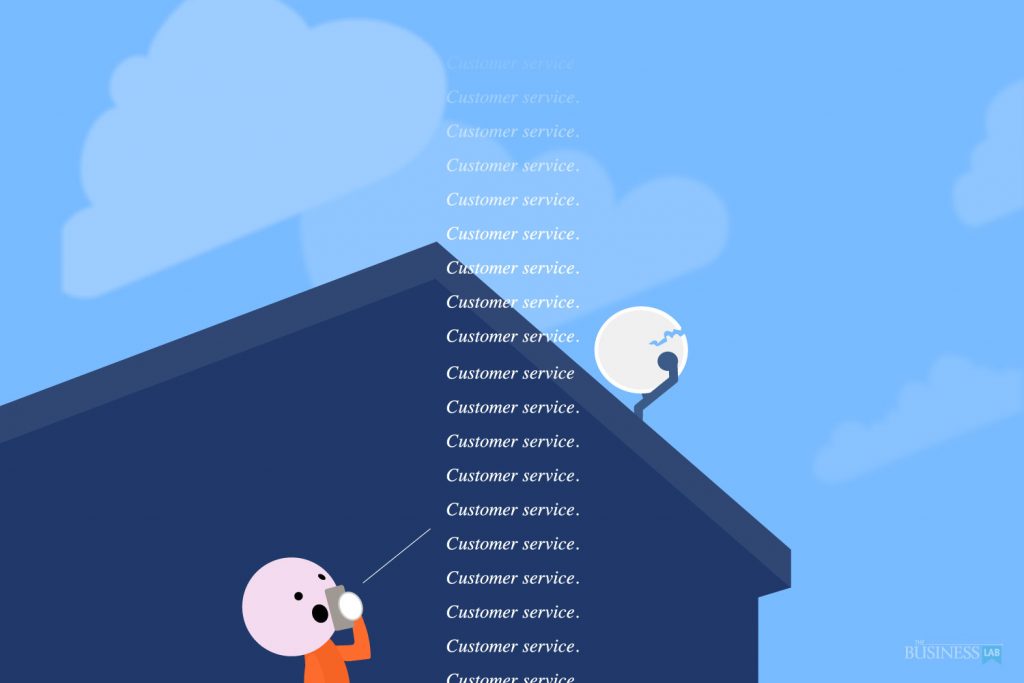
What Happens When Your Focus Is The Constraint?
A constraint is that thing that limits you from getting more of what you want.
If you can increase sales by 20, 40, 60%, and not “break” your system, then your constraint is “more sales.” If you can’t keep up with the sales you have, then your constraint is internal – “more capacity.”
If something is limiting you from getting more of what you want, there is a specific way in which it is limiting you. It makes sense that you’d want to figure out how to remove that limitation.
Let’s assume you are a manufacturer and can increase sales rather significantly without breaking your system. This also assumes that the market you are in has enough sales to go after. If you “own” the market (80%+ market penetration), then you’ll need to find a new segment (a topic all its own). Note of caution: never risk your core business!
Here’s what we know about increasing sales.
You can’t ship a part until it’s packaged.
You can’t package a part until it’s manufactured.
You can’t manufacture a part until someone needs it.
You can’t satisfy a need until someone knows about you & believes you can fulfill their need.
Yep, still true – this hasn’t changed… “nothing happens until something is sold (and paid for!).”
So, what has changed?
The way things are bought.
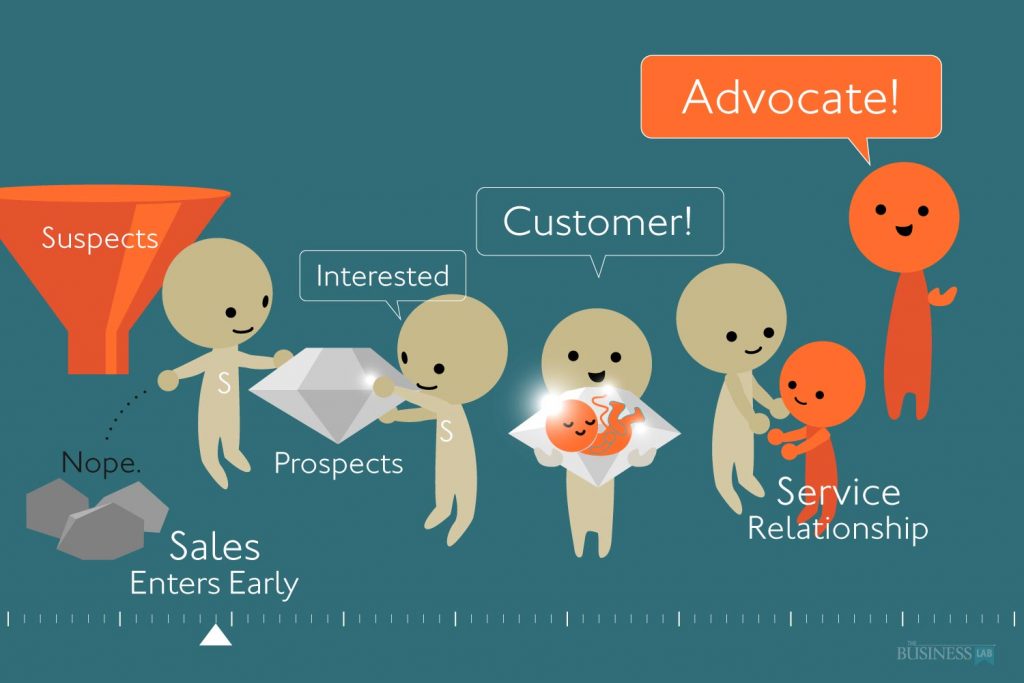
Products and services are no longer sold; they are bought. While the underlying meaning is the same, the above truth has become “nothing happens until someone buys something.”
This is a subtle but fundamental shift.
Back in the day, customers needed salespeople to get the information necessary for the right decision.
Is this true today?
No, no, it is not.
Why?
Because 72% of all B2B buyers or influencers are under the age of 45.
Okay, it’s not their age that’s driving the change. It’s the fact that they grew up with the Internet and having all the information they need readily available… only a click or two away.
Why does this matter?
Because buyers can, and indeed are, by-passing your sales teams and, in many cases, your marketing efforts.
Seventy percent of B2B buyers fully define their needs on their own before engaging with a sales rep. Forty-four percent have already identified the specific solutions (a.k.a. companies they are going to contact) before reaching out to that handful of sellers.
A full 60% of the buying process is complete before the selected sellers even know there is a sale to be had.
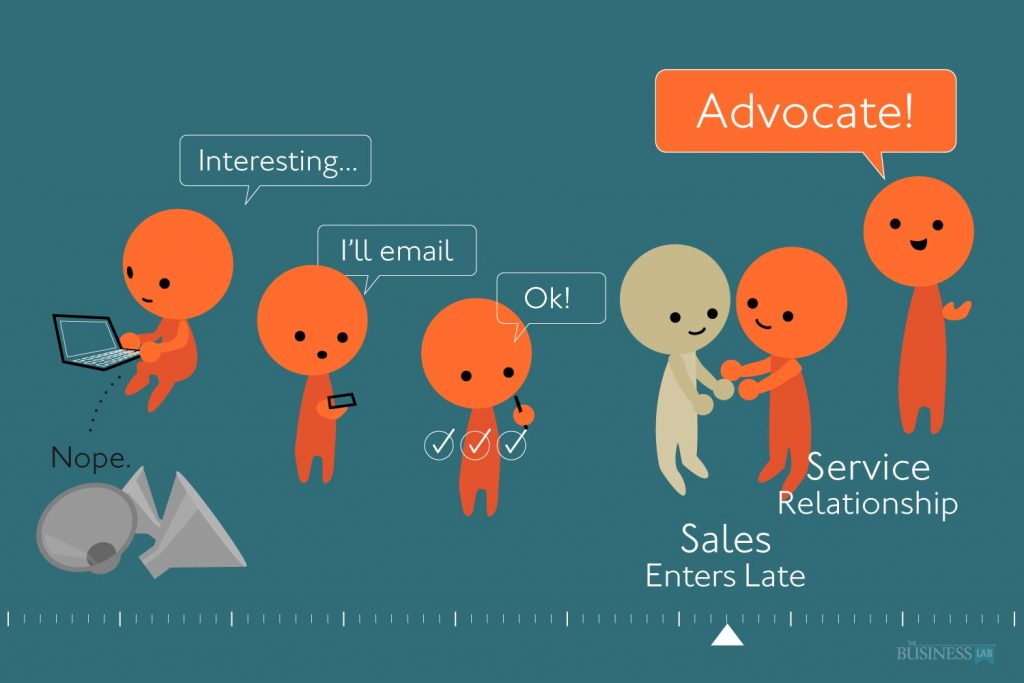
How many selected sellers get a chance?
Not many. No B2B buyer is going to spend their precious time vetting every company out there. So maybe they research two, maybe three? Or perhaps only one!
Today’s digital empowerment = impatience. Buyers want what they want and need now! The time between research and purchase is getting shorter. Sixty percent of buyers of industrial manufacturing products, who have been informed online, purchase on the first visit… to that one company they chose to visit. This is even more true for buyers of industrial supply products (79%) and buyers of pack-and-ship products (70%).
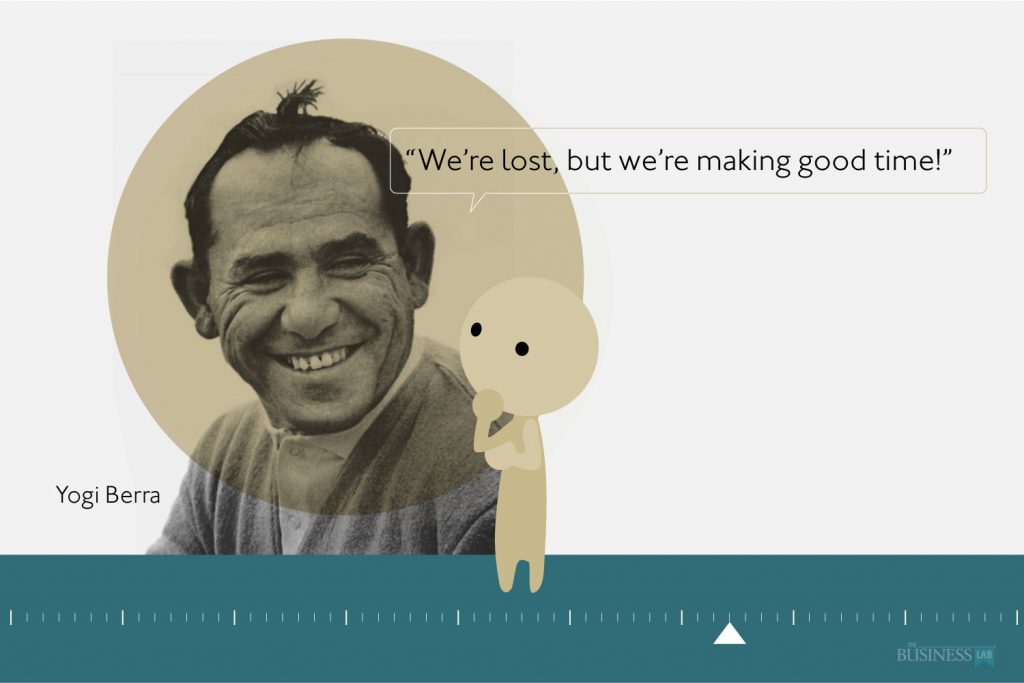
Is this new customer acquisition supply chain a problem?
No, not unless:
- You were unable to get the buyer, without any contact from you, to select themself as a prospect, or
- They couldn’t easily, and without connection with you, find what they needed from you, or
- Without even contacting you, they didn’t believe you could solve their specific problem, or
- You blew the opportunity in some way once they finally did contact you
And, of course, if the customer doesn’t perceive the value received to be greater than the price paid, they will not be a happy customer.
Isn’t there some whiz-bang technology out there that will fix this problem and make sure we are the first to be contacted by a prospect?
Well, there seems to be no end to the explosion of marketing technology, content writing, Instagram snapping, easy-access digital advertising, and analytics going on.
But, like a lot of data, it turns out to be just data. We’re willing to bet you already have a lot of data sitting around. Data, whose only purpose seems to be to satisfy some certification need, but does little to help you run your business better.
Describing the benefits of technology often turns out to be a Yogi-ism — “We’re lost, but we’re making good time!”
Now, we’re not down on technology. There are some genuinely company-saving-improving solutions out there, and they should be used. We’re only saying… just because you can, doesn’t mean you should.
To become the company of choice for the marketplace, you only have to do this — change your focus.
How?
By asking this question… “What job is my prospect hiring my sales and marketing team to do?”
The second you starting thinking in these terms, you’ll immediately switch from an internal, product-centric focus to and outward, customer-centric focus.
What job is your prospect hiring your sales and marketing team to do?
That may be quite specific for your company – and certainly something you probably know or need to find out; however, here’s a hint.
They are not hiring your sales and marketing team to:
Sell them, or
Tell them
This generation of 45-year-olds and under, despise being sold and told to. Keep in mind, this is the group who invented ad blockers. And, just like that, by 2016 over $4.1 billion in advertising worldwide had been blocked.
Here’s another hint.
Think about what your buyer is doing during their buying process. Remember, a full 60% of the buying process is complete before a buyer reaches out to any of the selected companies.
What are they doing during this time?
Your buyer is doing their research. They want education and information that will help them make the best possible decision for their company. Why? Because they want to succeed, grow, learn, be acknowledged, and solve problems. Fifty percent of B2B buyers are more likely to buy a product or service when they see personal value (career advancement, confidence, pride).
It could very well be that a simple change in focus will remove the limitation preventing you from “more sales.”
If so, then following the ‘constraint’ guidance of Theory of Constraints will be helpful:
- Identify the constraint/blockage/clog. Done!
- Optimize or exploit the constraint – Decide the best way(s) to fully understand your buyer and their needs so that you become the company of choice.
- Subordinate/laser focus everything else to optimizing the constraint** – Stay focused on your buyer. Ensure everything you do, say, and project is in alignment with your buyer. Remove or reduce activities that have little to do with buyer alignment. Ex: if your initiative is to focus on your buyer and align your company/products/solution with that buyer, then this isn’t the time to involve the company and leadership in new accounting technology, or even new machinery – even if the machinery will improve output. Why? Because more output isn’t what you need. More output and not enough sales will do little for your bottom line.
- Elevate the constraint – This is usually where you bring in some kind of help and is only necessary if steps two and three are unsuccessful at improving the flow and getting “more sales.” Take care not to have a marketing seizure here and start tossing out content or investing in technology. To fully understand your buyer, you only need to talk with buyers who didn’t buy from you.
- When you are successful at breaking the constraint and obtaining optimum flow and “enough sales,” then the constraint will move to another area. Once you’ve reached that point, go back to step one and start over.
Good examples of subordinating or getting laser focused on an immediate goal:
Automakers who stopped making cars to make respirators (this included Formula One race car companies)
Distilleries who stopped making tequila to make hand sanitizers
Manufacturers who stopped making their product to make masks and other medical equipment
John F. Kennedy’s goal in 1961 to put a man on the moon by the end of the decade
CEO’s all over the world who come in and turn a company around
Gordon Bethune (Continental Airlines) — In 12 months, turned a $55 million/month loss into a $224 million profit
Angela Ahrendts (Burberry) — Used social media to reach a new generation, turned mirrors into catwalk screen, equipped salespeople with iPads and doubled revenue and profits within five years
Steve Jobs (Apple) — Came back, reduced projects from 350 to 50, then to 10. Focused on creating the next big thing = iMac, iPod, iTunes, iPhone and in so doing increased Apple’s stock by 900%
Richard Teerlink (Harley Davidson) — Showed up in 1981 only to find the company’s market share had dropped to 15% and the company reported a loss of $15 million. During his reign he recovered the company’s US market share to 50% and posted annual sales of more than $1.7 billion.
Stay Nadella (Microsoft) — Took over as CEO in 2014 and took an $8 billion loss to completely shut down their smartphone division, moved Word and Excel to the cloud (risking another $8 billion), used cash reserves to build cloud computing centers and by 2018, their stock price had tripled. (Nice to have $16 billion leeway!)
James Rhee (Ashley Stewart Plus Size Clothing) — Took over as CEO in 2013 while the company was facing its second bankruptcy in three years. He turned things around by changing company culture, created a mission-driven dedication to core customers, transparent communication, learning processes and kindness. Reduced corporate headcount by 40, closed 100 stores, analyzed core customer habits and reintroduced a local charitable giving program. The company emerged from bankruptcy in 2014 and by 2015 net sales were growing bu 80% and organic sales were up by 25%. Today, it’s one of the most profitable plus-size fashion brands in the world.
Mark Shapiro (Six Flags Entertainment) — In 2009 the company was $2.4 billion in debit and filing for Chapter 11. In less than a year, they emerged from Chapter 11 and cut debt in half. By 2016 the park’s surpassed 30 million visits for the first time while providing shareholders with a 14% return on investment.

Embrace the constraint. All improvement is through the constraint.
Oddly, it is the path of least resistance.
Flow on…
KE

